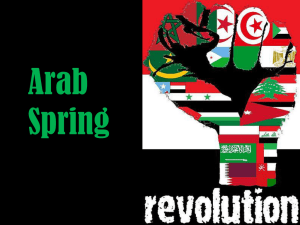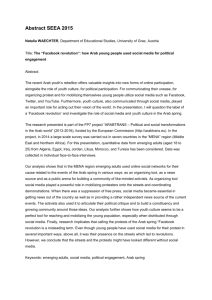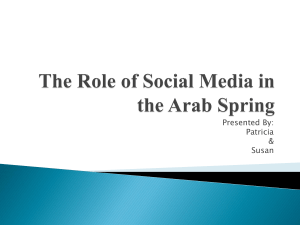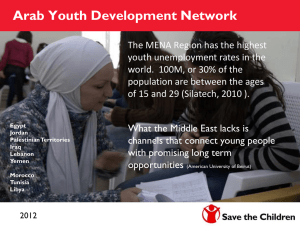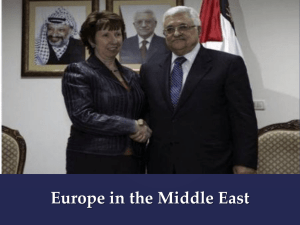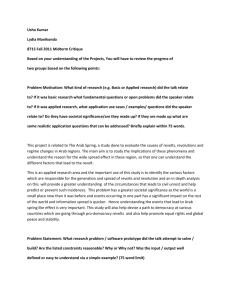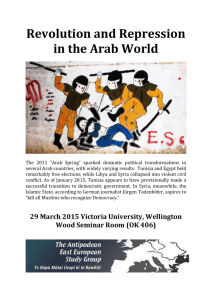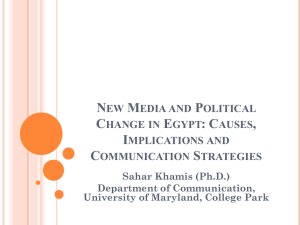Unit Template
advertisement
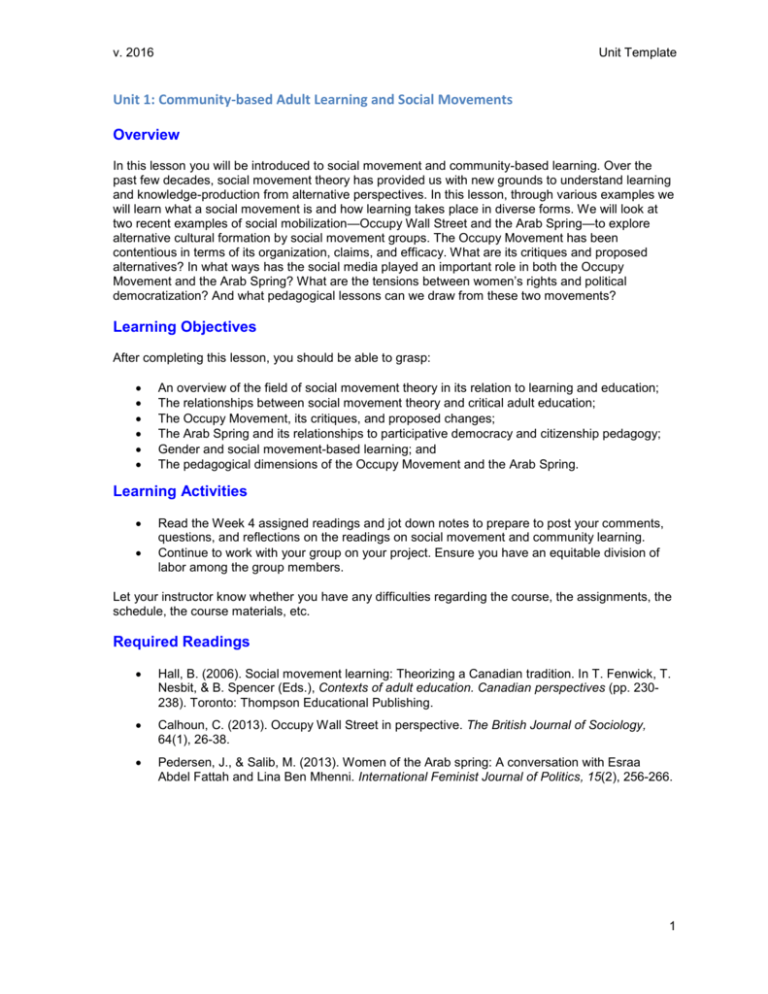
v. 2016 Unit Template Unit 1: Community-based Adult Learning and Social Movements Overview In this lesson you will be introduced to social movement and community-based learning. Over the past few decades, social movement theory has provided us with new grounds to understand learning and knowledge-production from alternative perspectives. In this lesson, through various examples we will learn what a social movement is and how learning takes place in diverse forms. We will look at two recent examples of social mobilization—Occupy Wall Street and the Arab Spring—to explore alternative cultural formation by social movement groups. The Occupy Movement has been contentious in terms of its organization, claims, and efficacy. What are its critiques and proposed alternatives? In what ways has the social media played an important role in both the Occupy Movement and the Arab Spring? What are the tensions between women’s rights and political democratization? And what pedagogical lessons can we draw from these two movements? Learning Objectives After completing this lesson, you should be able to grasp: An overview of the field of social movement theory in its relation to learning and education; The relationships between social movement theory and critical adult education; The Occupy Movement, its critiques, and proposed changes; The Arab Spring and its relationships to participative democracy and citizenship pedagogy; Gender and social movement-based learning; and The pedagogical dimensions of the Occupy Movement and the Arab Spring. Learning Activities Read the Week 4 assigned readings and jot down notes to prepare to post your comments, questions, and reflections on the readings on social movement and community learning. Continue to work with your group on your project. Ensure you have an equitable division of labor among the group members. Let your instructor know whether you have any difficulties regarding the course, the assignments, the schedule, the course materials, etc. Required Readings Hall, B. (2006). Social movement learning: Theorizing a Canadian tradition. In T. Fenwick, T. Nesbit, & B. Spencer (Eds.), Contexts of adult education. Canadian perspectives (pp. 230238). Toronto: Thompson Educational Publishing. Calhoun, C. (2013). Occupy Wall Street in perspective. The British Journal of Sociology, 64(1), 26-38. Pedersen, J., & Salib, M. (2013). Women of the Arab spring: A conversation with Esraa Abdel Fattah and Lina Ben Mhenni. International Feminist Journal of Politics, 15(2), 256-266. 1 v. 2016 Unit Template Social Movement Learning Occupy Wall Street in Perspective Calhoun argues that OWS is more a moment in the past than a continuing movement. He asserts that the next phase of this movement will happen under a different name. He highlights five significant points about the OWS. 1) It was not just an American phenomenon but part of a much larger global wave of mass mobilization on related issues. 2) The tactic of occupying major public spaces itself limited the movement’s scope and longevity as it was very difficult to encamp for longer periods of time. 3) The police brutality and the use of social media by protesters helped in the sudden flourishing of OWS. 4) OWS was unique in being the first mass mobilization to focus entirely on the financial apparatus that caused the problem in the first place. 5) OWS was more performative than organizational. Passion and affect played a key role in the dramatic escalation of protest rallies while the organizational structure was always absent. Calhoun concludes that OWS was temporary but it will have enduring cultural effects. It has changed the way people looked at structural issues like inequality. Watch the Ted Talk video “How to Start a Movement” https://www.youtube.com/watch?v=RXMnDG3QzxE Women of the Arab Spring: A Conversation with Esraa Abdel Fattah and Lina Ben Mhenni 2 v. 2016 Unit Template Creative Commons licensed image courtesy of David Shankbone Two women activists at the heart of Arab Spring, Egyptian Esraa Abdel Fattah and Tunisian Lina Ben Mhenni talk to two academics about their experiences. Esraa runs Egyptian Democratic Academy while Lina blogs at A Tunisian Girl. Both were nominated for the Nobel peace prize. In their interview, they attest to the fact that women’s involvement in the Arab Spring is very significant and women from all walks of life such as students, activists, doctors and nurses, housewives etc. participated in the protests. The protests had given Arab women a much-needed chance to participate in the political process but Lina feels that in Tunisia, women’s participation in electoral politics is still nominal and women in the parliament are reliant on their male colleagues. Although they are hopeful that women’s place in post-revolution Egypt and Tunisia will change for the better, they are fearful that there are still challenges ahead which must be addressed in order to make sure that women’s freedom is maintained for a long term. Both women call for the separation of politics and religion and a secular constitution to move forward with building the post-revolutionary Arab world. “The Arab Spring” – A Timeline Create interactive timeline based on the following dates: 17 December 2010: In Tunisia, fruit vendor Mohamed Bouazizi lights himself aflame after being apprehended by police for failing to have a license to sell goods. Bouazizi’s arrest leads to reports of police brutality. His demonstration sparks nationwide protests to end the Tunisian president Zine El Abidine Ben Ali’s rule. 3 January 2011: In Algeria, violence erupts as protesters claim the government is responsible for corruption, limitations on freedom of speech, and poor living conditions. 8 January 2011: In an effort to calm the waters, the Algerian government lowers food prices and cuts taxes on sugar and cooking oils; this, however, is unsuccessful. 12 January 2011: Algeria faces a state of emergency as riots quickly escalate into selfimmolations. 14 January 2011: Tunisian president Ben Ali flees to Saudi Arabia when he is ousted for his role in the country’s unemployment, food inflation, political corruption, and lack of freedom of speech. 25 January 2011: Close to 18 days of protests, most in Tahrir Square, plague Egypt after the government tries to censor Internet access, making it difficult for citizens to organise through the social media. 26 January 2011: In Syria, protests begin after a public incident of police brutality, continued arrests, and the abuse of children. 27 January 2011: 16,000 protestors in Sana’a, Yemen raise red flags about high unemployment rates, poor economic conditions, and corruption. 3 February 2011: Human rights activists, notably politician Tawakel Karman, call for a “Day of Rage” in Yemen. Nearly 20,000 protesters gather, demanding President Ali Abdullah Saleh step down. Some Questions to Guide Your Readings and Reflections What is a social movement and how does it relate the learning and education? How do people learn from social movements? Present an overview of the social movement theories in the context of learning and education? Why a deeper understating of social movement learning essential for emancipatory political praxis? What alternatives does the OWS movement advocate? 3

